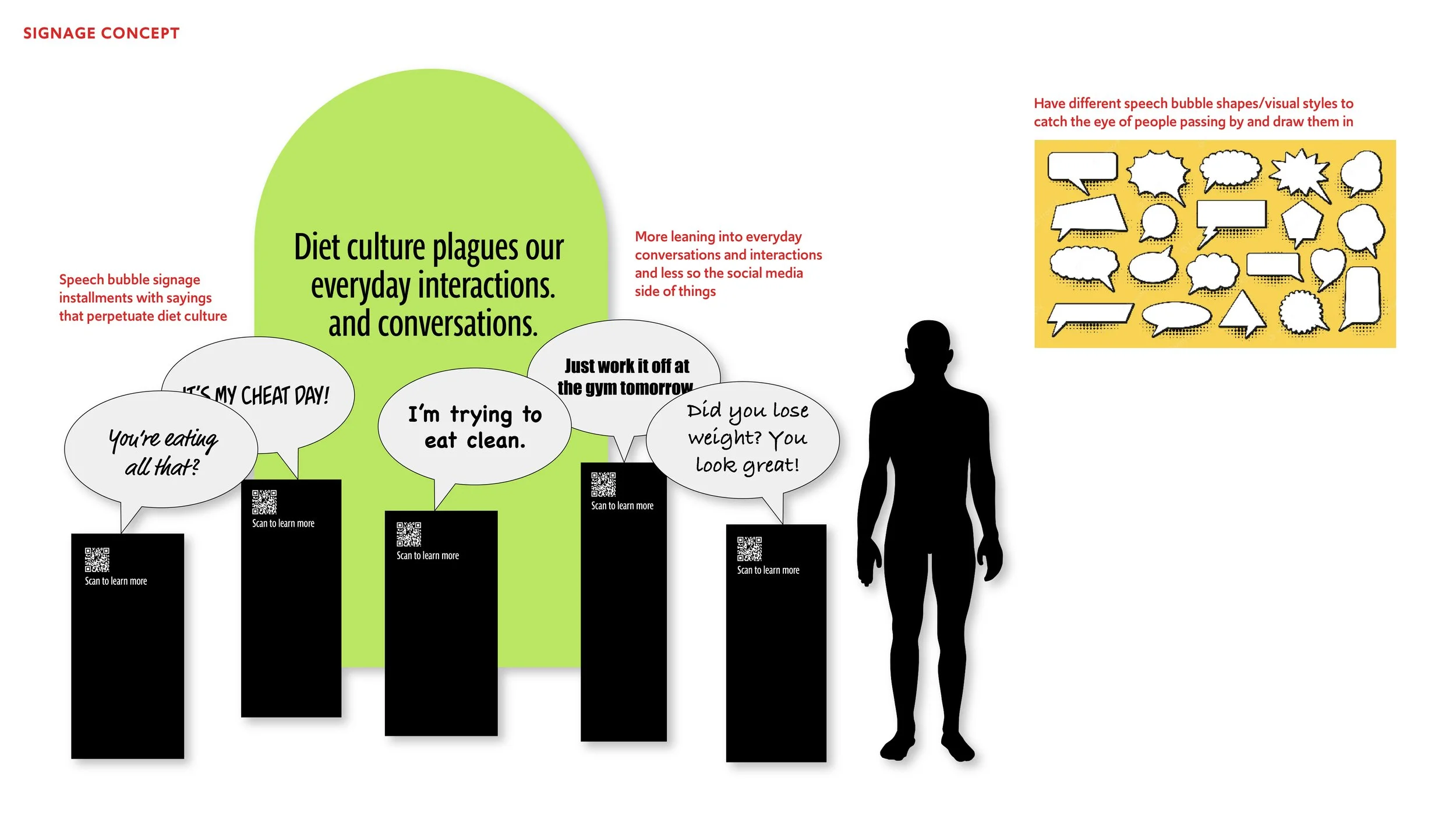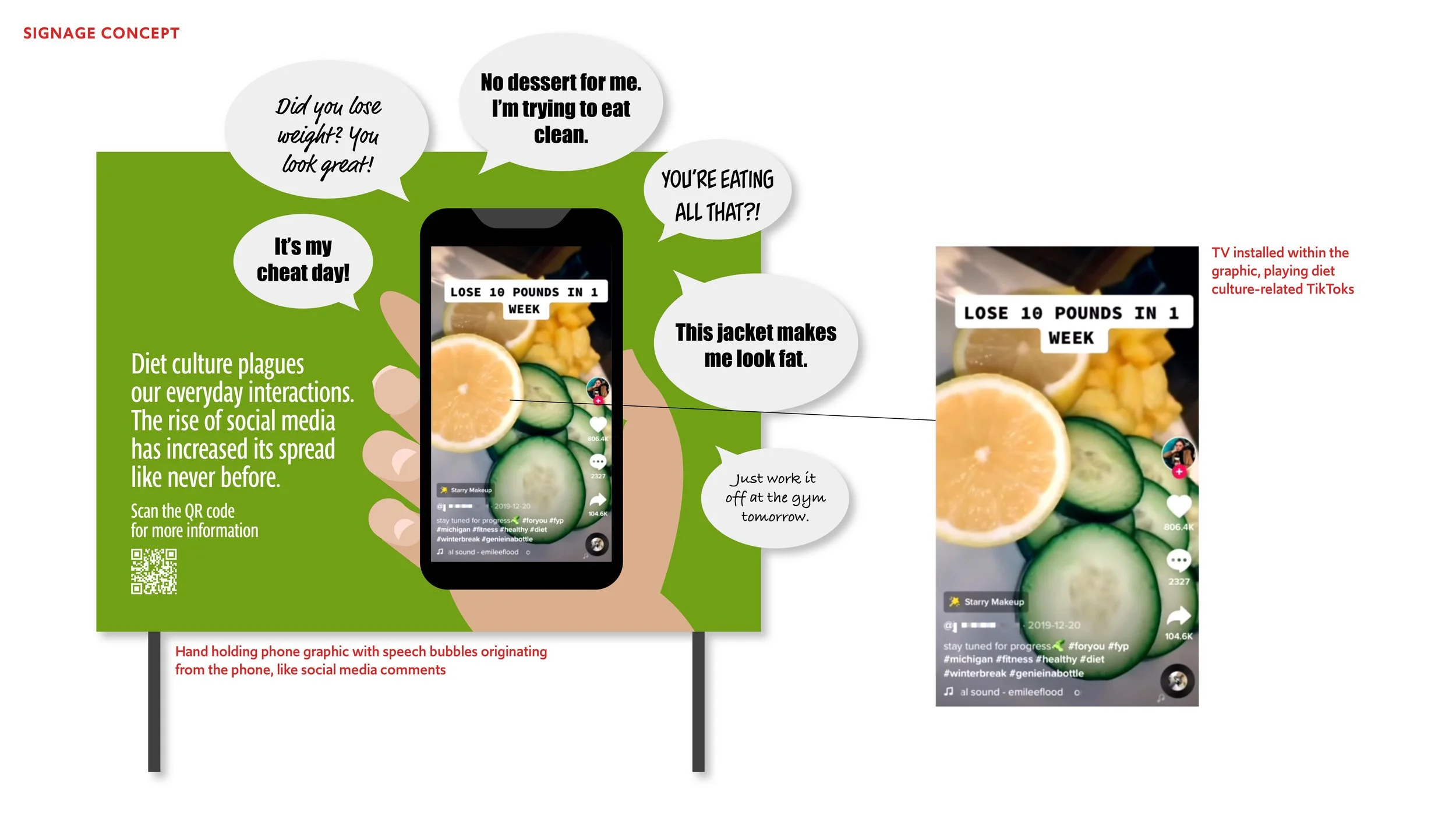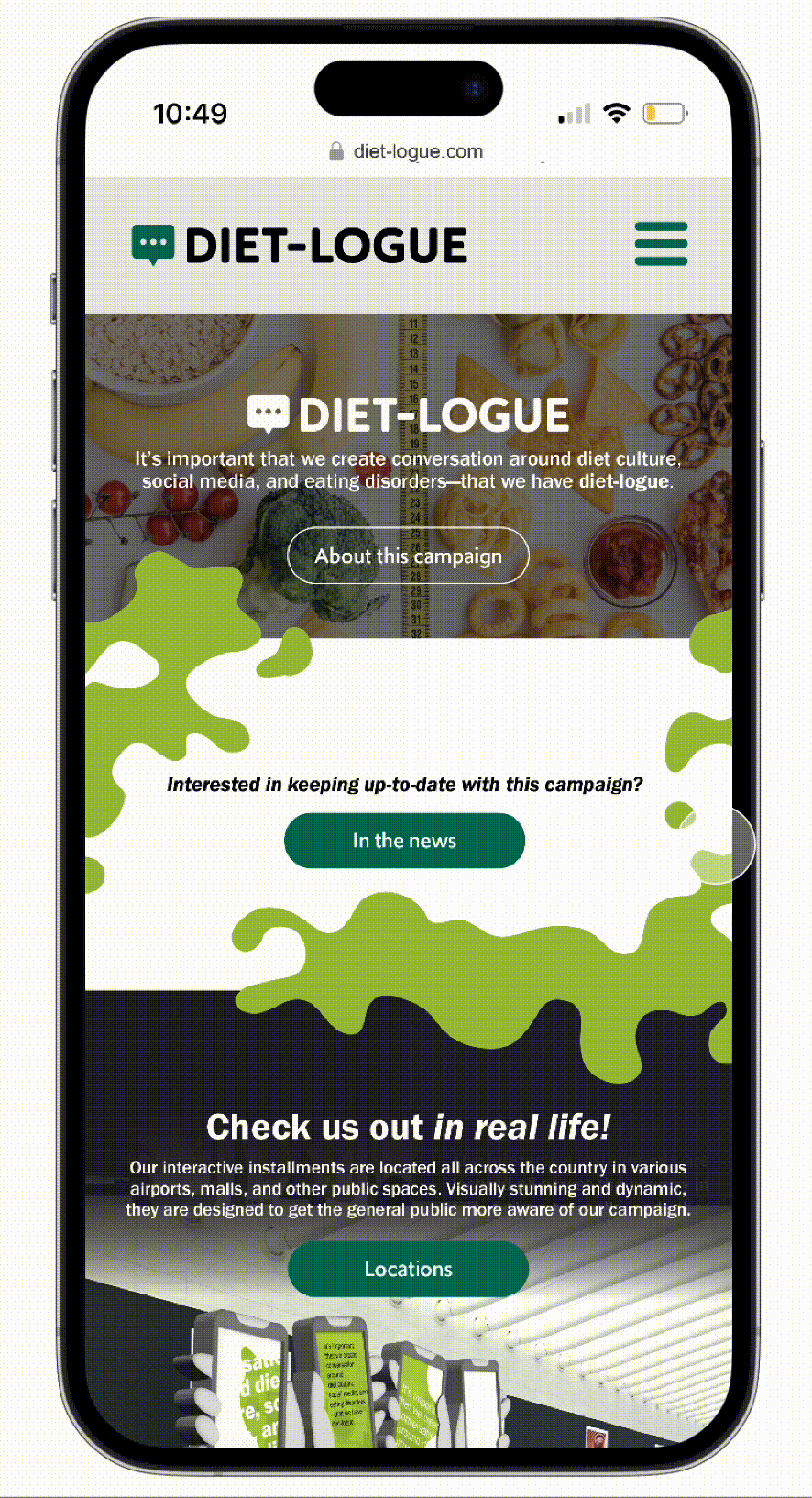
DIET-LOGUE BRAND ACTIVATION
Visual Identity | Print | Digital | Motion Graphics
*This is my capstone project for my undergraduate design program at SFSU. The brand “Diet-logue” does not exist; it is a fake entity I created for the sole purposes of this project.
Diet culture is the harmful belief that a thin body and weight loss is the goal of health and well-being. With today’s rise of social media, diet culture is more prevalent than ever before. My capstone focuses on the relationship between diet culture and eating disorders, where the ultimate goal was to create a design solution that would raise awareness and create more conversation about those ideas. I decided to create an eye-catching piece that would activate in largely populated public areas, like malls and airports.
Overview
Research
Research included examining scientific studies, peer reviewed journals, and trusted hubs of information such as the National Eating Disorder Association. I organized everything on Miro.
Inspiration, Ideation, Iteration
I gathered inspiration images on Pinterest and engaged in an initial iterative process where I quickly laid out initial visualizations that came to mind. At the same time, I worked on the logo for Diet-logue.
I solidified a concept involving hands holding phones and worked on further iterations, exploring how the individual pieces could work together in a designed space. I also looked at ways to display text and other visuals, including where to place the logo, another component I began working on.
At the same time, I worked on the logo for Diet-logue.
Part of what makes the signage visually engaging is that it will involve beautiful motion graphics, so I iterated on a few concepts by laying out storyboards.


“Diet-logue” is the final product—a campaign dedicated to spreading awareness and creating more open conversation around the topics of diet culture, social media, and eating disorders.
Dynamic signage activations are placed in public areas around the country to catch the attention of passerby. These activations are linked to a website where that houses information, education, and resources.

Visual Identity
The logo is a simple speech-bubble placed next to the name of the campaign. The dark green color of the icon is one of two main shades in the color palette, the other being a light green with a yellow tint. This color resembles disease, referring to the “spread” of diet culture ideas.
The typeface FranklinGothic URW fits this campaign perfectly, not only in aesthetic but also usability: it’s easy to read when blown up to large sizes as well as when it’s reduced to use for copy.
Captivating Signage
To create visual interest, the signage takes the forms of hands and arms and implements unique angles and curves; the visuals of the static signage work together with dynamic motion graphics, all in all creating a stimulating experience.
As viewers approach the signage, they would be able to read the text; this is when they would be able to visit the campaign website and/or access Diet-logue’s augmented reality space.
Additionally, the design is crafted in a way that allows the signage to be accessible from both sides.
Dynamic Motion Graphics and an AR Environment
The motion graphic sequence involves a wondrous looping sequence of exploding and shrinking color to highlight textual elements. The color that spreads to all four phones symbolizes the influence of diet culture, affecting all those who are online and consuming those ideas.
This video shows the motion graphic as well as the AR space in action.
Take a closer look at the transition from live to AR!
Essentially, if the motion graphic is viewed in real life, the text displays a general call-to-action. However, if viewed through a phone camera, the text contains content that is potentially triggering to select audiences.
The addition of AR technology effectively solves the issue with triggering content.
A Website to Centralize Information
One of Diet-logue’s goals is to provide clear and accessible information, so a prominent section of the campaign website is its education space. Here, Diet-logue translates complex ideas into simple terms, so that anyone can understand it.
The campaign has a page on the NEDA (National Eating Disorder Association) website, providing another access point.









































